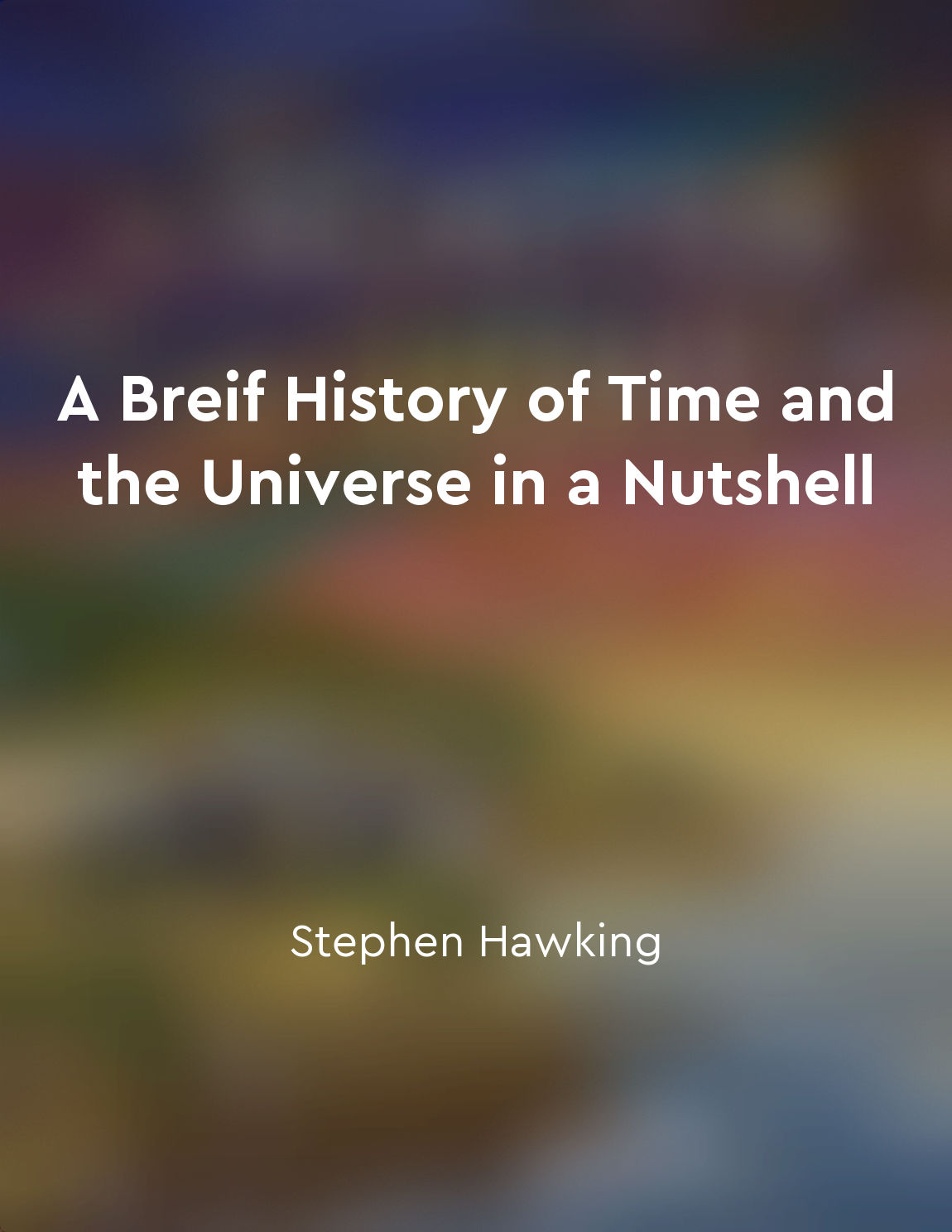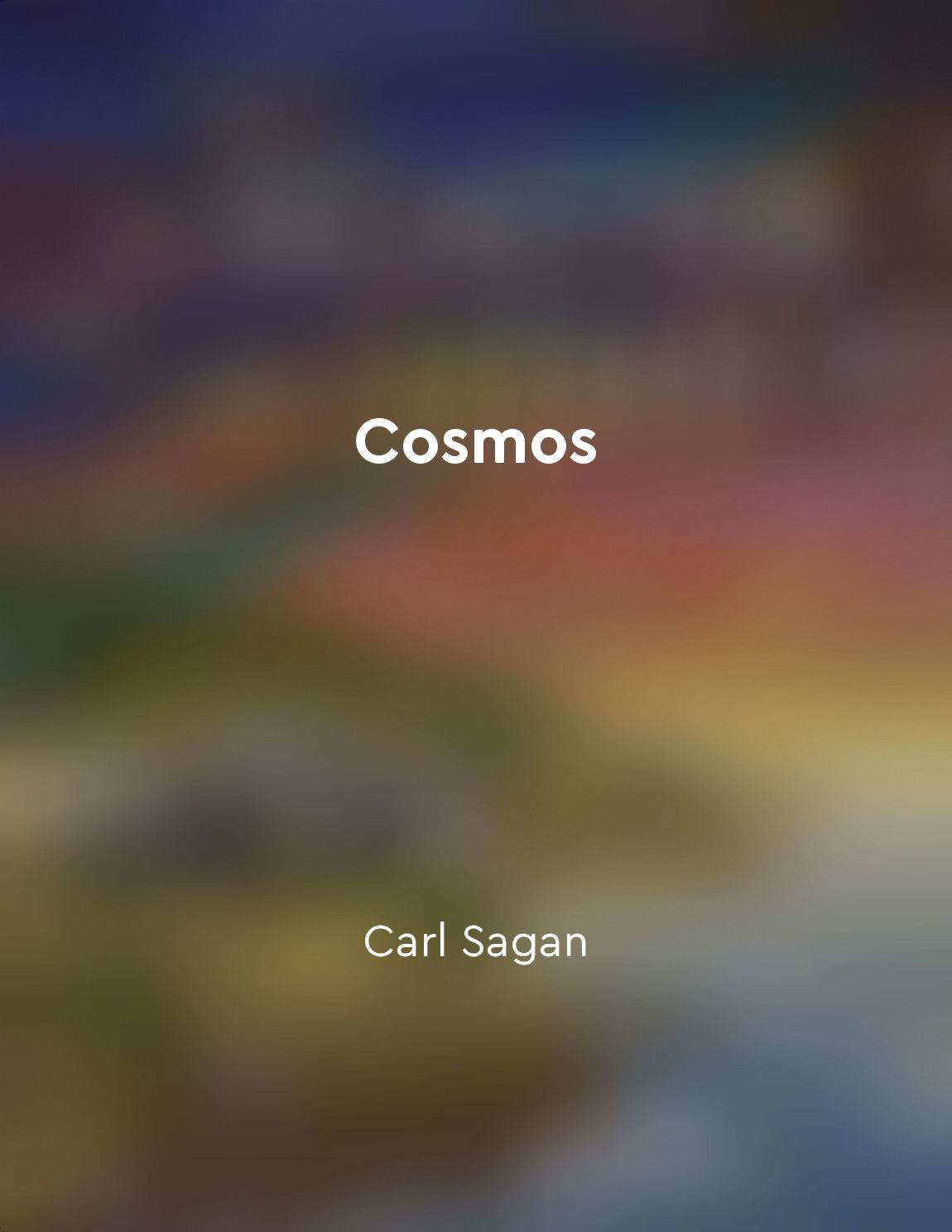Dark matter's mysterious influence from "summary" of A Breif History of Time and the Universe in a Nutshell by Stephen Hawking
Dark matter's mysterious influence is one of the most intriguing aspects of modern astrophysics. Scientists have long been puzzled by the fact that the visible matter in the universe cannot account for the gravitational forces that hold galaxies together. The existence of dark matter was first proposed in the 1930s by astronomer Fritz Zwicky, who noticed that the velocities of galaxies in clusters were much higher than expected based on the amount of visible matter present. Since then, numerous observations have confirmed the presence of dark matter in the universe. One of the most compelling lines of evidence comes from the study of the cosmic microwave background radiation, which shows small fluctuations that are consistent with the presence of dark matter. Additionally, the rotation curves of galaxies and the gravitational lensing of light from distant objects also point to the existence of dark matter. Despite its pervasive influence on the universe, dark matter remains elusive and difficult to detect. It does not emit, absorb, or reflect light, making it invisible to telescopes. Scientists have been searching for dark matter particles using a variety of experimental techniques, but so far, they have not been successful in directly detecting them. The nature of dark matter is still a subject of intense debate among astrophysicists. Some theories propose that dark matter consists of exotic particles that interact very weakly with ordinary matter. Others suggest that dark matter may be made up of primordial black holes or even entire galaxies of dark matter. Despite the many unanswered questions surrounding dark matter, its influence on the universe is undeniable. Without dark matter, galaxies would fly apart due to the high velocities of their stars. Dark matter plays a crucial role in shaping the large-scale structure of the universe, acting as a gravitational glue that holds galaxies and galaxy clusters together. In summary, dark matter's mysterious influence is a fascinating and enigmatic phenomenon that continues to challenge our understanding of the cosmos. As scientists strive to unravel the mysteries of dark matter, they are also unlocking new insights into the fundamental forces and structure of the universe.Similar Posts
Climate change threatens civilization
The Earth is in trouble. Our planet is getting warmer, and the consequences could be disastrous. Climate change is not just a v...
Deciphering requires effort
The process of deciphering is not a simple task that can be accomplished with ease. It requires a significant amount of effort ...
Satellites stay in orbit by balancing gravitational pull with inertia
A key concept in understanding how satellites remain in orbit is the delicate balance between two fundamental forces: gravity a...
Belief in magic and the supernatural can be dangerous
The human mind is a fertile ground for beliefs in magic and the supernatural. We are drawn to the mysterious and the unexplaine...
Stars shine brightly
Stars in the universe are like glowing beacons scattered across the vast expanse of space. These celestial bodies emit light an...
Life on Earth resulted from universe’s conditions
The existence of life on Earth is a result of the particular conditions that prevail in our universe. These conditions, which i...
Energy density fluctuations may support cyclic model
Energy density fluctuations, which are tiny differences in the amount of energy present in different regions of space, could pl...

Gravity's effect on time
Gravity, as described by the theory of general relativity, is not just a force that pulls objects towards each other. It also h...

Our existence is just a fraction of cosmic time
In our brief time on this planet, we often forget the vastness of the cosmos. Our existence is but a mere blip in the grand sch...
Faraday discovered electromagnetic induction
Faraday's discovery of electromagnetic induction marked a crucial turning point in the history of science. By demonstrating tha...
